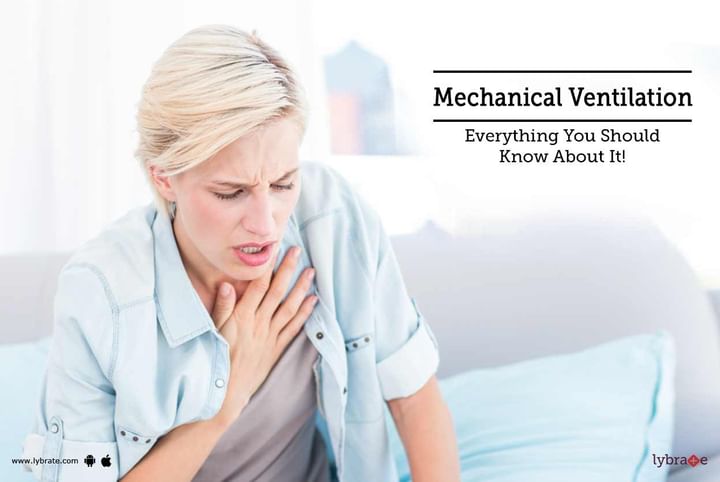Mechanical Ventilation - Everything You Should Know About It!
Mechanical ventilation is the artificial method of assisting a person to breathe with the help of a device called ventilator. It is employed when a person’s spontaneous breathing who has been affected and cannot breathe on his/her own.
When is Mechanical Ventilation indicated?
Several injuries or other medical conditions could call for assisted breathing-
• Apnea (inhalation muscles become non-functional) that leads to intoxication and respiratory arrest
• Lung injury or trauma that leads to an inadequate exchange of gases between the lungs
• Acute asthma that requires intubation
• Chronic obstructive pulmonary disease
• Obesity hypoventilation syndrome
• Respiratory acidosis (excessive carbon dioxide in the blood)
• Respiratory distress like tachypnea that leads to rapid breathing
• Hypoxemia (too little oxygen in the blood)
• Muscular dystrophy (weakening of skeletal muscles)
• Amyotrophic lateral sclerosis (neurons controlling the voluntary muscles die)
Duration of artificial respiration
1. It is used for the entire duration of a surgery.
2. Long-term ventilation is necessary for people suffering from chronic illnesses who have been hospitalized. In such cases, special measures are taken to stabilize the trachea.
3. It can be used by ailing persons at home as well.
How is mechanical ventilation performed?
1. A tube is inserted into the trachea. This process is called intubation. The tube goes in through the mouth or nose (endotracheal tube). The tube is kept in place with a metal strap that goes around the head. The other end of the tube is attached to the ventilator. The ventilator pumps oxygen and other gases into the lungs. It can be a painful process, and before surgeries, it is performed under anaesthesia.
2. The tube can be inserted through a surgical hole in the throat. This process is called tracheotomy.
When the ventilator applies pressure to blow air into the lungs, it is called positive pressure. the exhalation can be done by the person himself/herself or if spontaneous respiration is compromised, the ventilator will help pump out the carbon dioxide.
Both types of tubes affect a person’s ability to speak because they pass through the vocal chords. Tracheotomy is performed on people who will require ventilation for long stretches of time because endotracheal tubes are uncomfortable and sometimes painful.
Risks associated with artificial ventilation:
1. The gravest risk is that of pneumonia. A person who is undergoing ventilation is already physically weak. And that makes the person susceptible to a wide range of diseases. The tube that is inserted into the trachea allows the entry of different types of bacteria. The result is Ventilation Associated Pneumonia (VAP). Because the tube is always present in the trachea, a person cannot cough. Coughing flushes out many bacteria. VAP is curable with antibiotics.
2. Endotracheal tubes may also lead to a sinus infection
3. Pneumothorax is yet another risk linked with artificial ventilation. Air leaks from the lungs and this causes pain and in extreme cases may even lead to the collapse of the lungs.
4. Because air is pushed into the lungs with pressure, it might cause lung damage.
5. Too much oxygen is also harmful to the lungs.
Taking a person off ventilation
This process is called weaning. The ventilator is turned off but still attached to the person. The person is allowed to breathe on his/her own. If there are difficulties, the ventilator is turned back on. It is like a trial run. Gradually the individual develops the ability to breathe on his/her own.
Mechanical ventilation is a painful and often risky method. But when a person is unable to breathe, it is the only way to save his/her life.



+1.svg)
